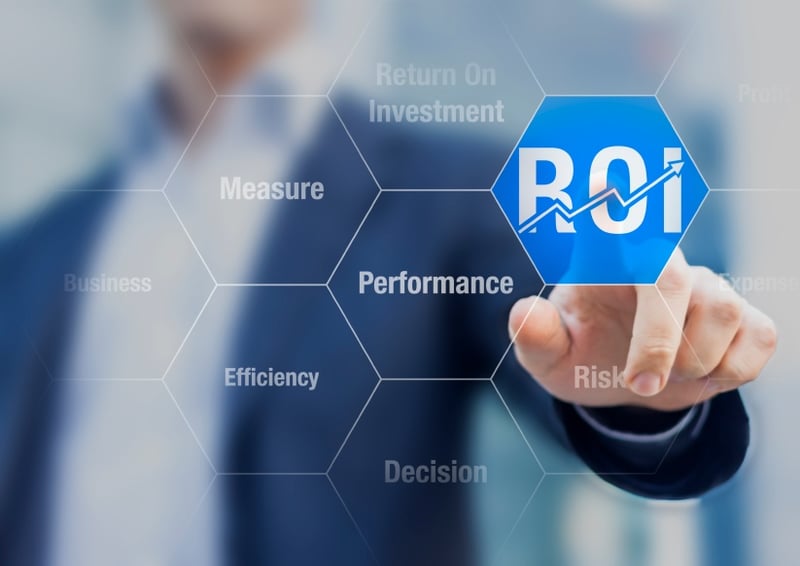
How frequently do you use the term “ROI” in front of customers and potential buyers?
I frequently hear sales and marketing professionals talk about “ROI” inaccurately. In a casual conversation, people might still give you the benefit of the doubt and have faith that you know your stuff. However, if you’re making a formal presentation or having a serious conversation with a prospect who’s well versed in financial terminology, any misuse of the term could obviously leave a disastrous impression about you and your company.
For example, I hear both sellers and marketers say things like this all the time:
“Your ROI is $100,000.”
Why this is incorrect: If you've ever expressed ROI in terms of dollars, you've likely confused ROI with net present value (NPV). For an investment decision, NPV answers the question, “What is the value in today's dollars of the future cash benefit minus the future expenses required to achieve said benefit?” ROI is not a dollar amount, it’s a percentage. Specifically, it’s a percentage that represents what your net gain will be on any investment.
ROI = (Gain of Investment - Cost of Investment) / Cost of Investment
In other words, if your benefit is $100 but you spend $50 to achieve that benefit, your ROI is 100%.
NPV is still an important consideration because the term takes into account the value of a dollar over time. Obviously a dollar today is worth more than a dollar five years from now. Let’s say you invest $100,000 with an expected return of $120,000 in one year. That investment would would have a higher NPV than an investment of the same amount of money with an expected return of $120,000 in five years. The reason is the time value of money dictates that you could take your $120,000 one year from now and put it in a bank for the next four years. After five years you would have your $120,000 principal plus all the compound interest your earned whereas in the second scenario you would only have your $120,000 investment return after five years.
Speaking of periods of time, I've also heard sellers and marketers say things like this:
“You’ll get a six-month ROI with our solution.”
Why this is incorrect: If you've ever expressed ROI in terms of a period of time, you’ve likely confused ROI with payback period. Again, ROI is always a percentage, never a period of time. If I invest $100,000 in a project, the payback period is the length of time it takes for the cumulative benefits to become greater than the cumulative investment. Payback period is always measured in time (typically months).
Talking about ROI
During my first job out of college as an engineer, I became an economic evaluator. That meant part of my job was to evaluate capital investments and decide whether they represented a good investment for the company (including evaluating the ROI, NPV, and payback period). So that was where I learned a lot about financial analysis and how to talk about numbers with CFOs.
The magic of these financial metrics is that together they give you a great picture of the impact of an investment. Essentially, you can measure ROI, NVP, and payback period on any investment decision. That’s how we’re able to build ROI calculators for so many different scenarios for our clients. The benefits and costs of a solution may vary but the process to calculate the solution's financial impact remains the same.
People confuse financial terms all the time, so if you've gotten this one wrong in the past, don’t feel bad. Just don’t let it jeopardize your ability to close a deal.
What’s your understanding of the term “ROI,” and how frequently does it crop up in your discussions with prospects and clients? Share your thoughts in the comments section.








